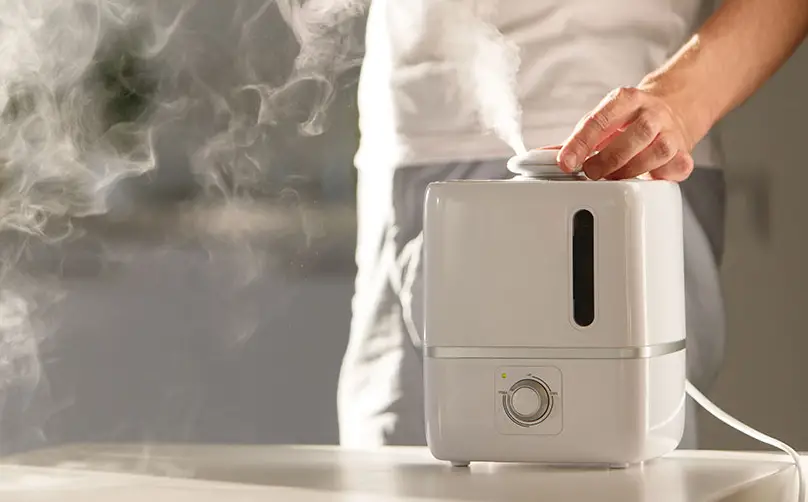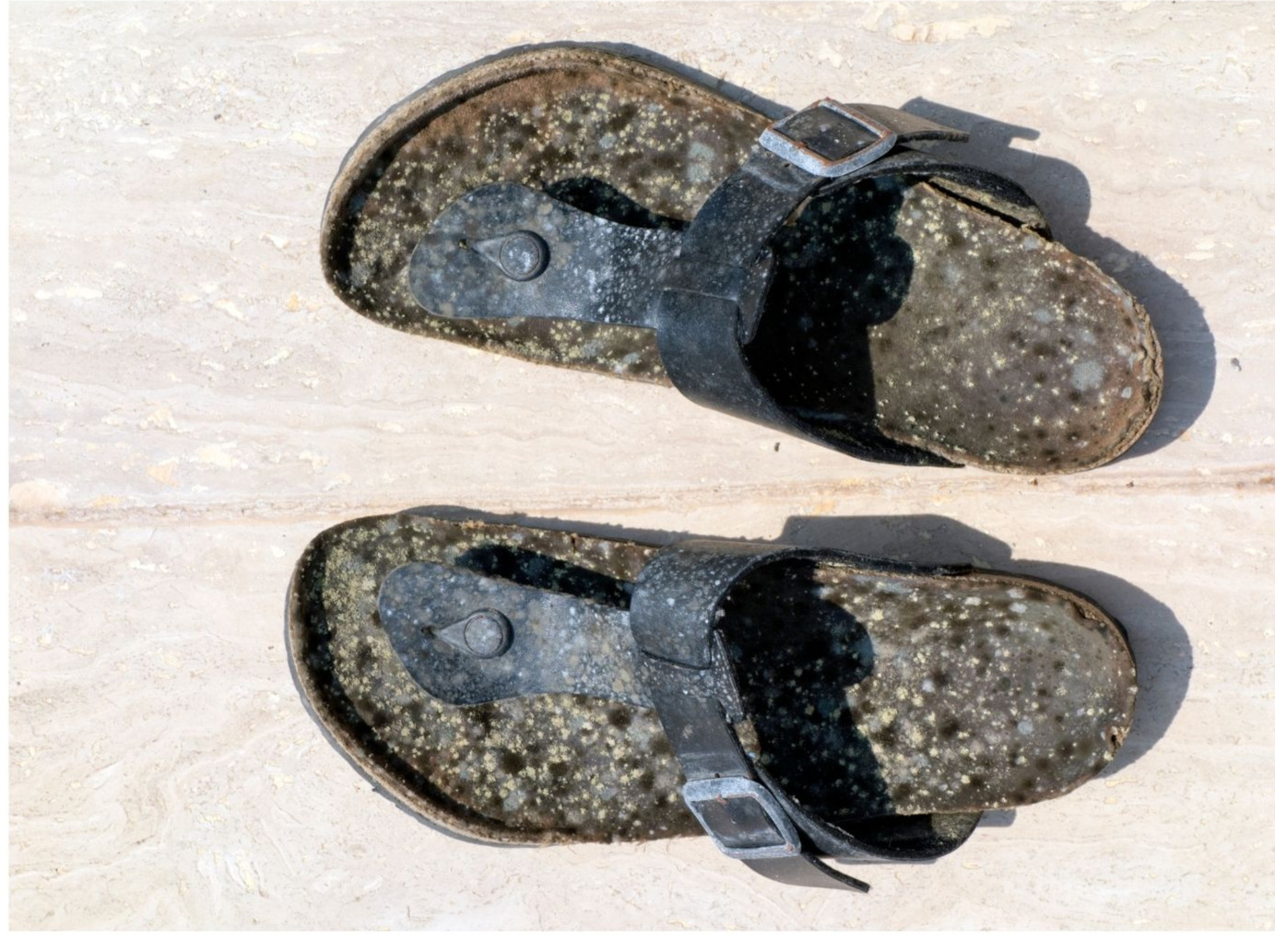Table of Contents
Is Pink Mold in Humidifier Dangerous?
Mold can be of three types and among them, we are talking about the pink molds found in humidifiers. Aureobasidium Pullulans or A. Pullulans is that specific pink mold that is found mostly in humidifiers.
Though having pink mold in humidifiers is not considered as dangerous as other molds. But it can become dangerous over time. Frequent exposure to pink mold can cause health issues. It may cause lung infections, heart problems, bladder infections, digesting difficulties, and many more.
The good news is that having pink mold in humidifiers is a common phenomenon and simple to get rid of. Regular inspection and cleaning is the best method to prevent a pink mold problem.
 Dangers Of Pink Mold In Humidifiers
Dangers Of Pink Mold In Humidifiers
Pink molds can impose serious threats to people with weak immune systems. Right from breathing issues to allergy issues, various health disorders can be seen. It can worsen the condition of people with allergies and asthma. Along with this, it may cause skin and bladder infections also.
Difficulty In Breathing
As we know humidifiers spray water vapor to keep the air moist, pink mold in humidifiers also gets sprayed in the air and starts looking for a new place to infest. Mold can infest your nose and lungs. Eventually causing respiratory diseases and difficulty breathing.
People with asthma problems can suffer from asthma attacks. Those who already have respiratory problems are more prone to developing new problems.
Hypersensitivity pneumonitis commonly referred to as “humidifier lung,” can result from frequent contact with this pink mold. It’s a lung condition with symptoms of cough, respiratory problems, and fever.
Heart Problems:
Pink molds can cause heart or cardinal problems. People with heart problems are more prone to get affected.
Weak Immune System:
Though people with a strong immune system can get saved, those who have weak immune systems get severely affected. Causing fever, cough, and cold are some of the common symptoms.
Allergy Attack:
Having a humidifier can heal allergy issues by keeping the dry air moist. But if pink mold grows and develops in a humidifier it will rather cause more allergy problems.
Skin Infection:
If you have an open wound then pink molds can infest the wounds and make them worse. Eventually, it may cause skin infection.
Gastrointestinal Problems:
Pink molds getting to your stomach through your mouth or nose can upset your stomach leading to diarrhea.
Infesting On Contact Lenses:
Be aware that pink molds can also infest and develop on contact lenses. Contact lens is a potential infesting place for pink molds.
If pink molds get sprayed from the humidifiers and get to your contact lenses then it will make you suffer. Wearing those lenses can result causing eye irritation and eventually affect your eyesight.
Bladder Infection:
Frequent exposure to pink molds for a long time can lead to bladder infections, more notably urinary tract infections (UTI).
 How To Get Rid Of Pink Molds?
How To Get Rid Of Pink Molds?
Faced with pink molds in your humidifier will need you to get rid of them as quickly as possible. There are no difficult tricks or techniques to do so. You simply need to take some precautions and remedies and you are okay to go.
Facing pink molds in the humidifier, cleaning is the only way to get rid of them. Otherwise, you can take some additional precautions to prevent future infestation of pink molds in your humidifier.
Cleaning The Humidifier
Pink molds are most likely to infest the humidifiers due to their wet and moist conditions. So, you need to clean the humidifier regularly. It’s best if you clean it once a week.
To clean the humidifier:
- Unplug the humidifier from the outlet. Detach the water reservoir tank.
- Open the tank which is the most possible place for pink molds. Make it empty. Fill it with vinegar/ hydrogen peroxide and keep it aside for about 30 minutes. It will make it easier to remove the mold from the humidifier. You shouldn’t use bleach as it contains chemical elements and can be harmful to the machine.
- Empty the tank again after 30 minutes. Use a cleaning sponge or a toothbrush and properly clean the tank including each and every corner.
- Use lukewarm water to rinse it off. Reattach it and fill the tank with fresh water after drying each part with a towel or allowing it to air dry.
- You may also check the filter and clean it with a solution of water and vinegar/hydrogen peroxide. Be sure to dab up any leftover moisture with a clean and dry towel or cloth.
- Also, check for mineral deposits near the base. Detecting deposits, clean with white vinegar and a toothbrush.
Additional Precautions
Let’s say your humidifier is free from pink molds. It is still not infested with any pink mold. But you should take some precautions so that it doesn’t happen in the future. Using humidifier pills, distilled water, dehumidifier, and refilling the tank daily are some potential ways you can follow.
Humidifier Pills
After cleaning the water tank you would want to take precautions so that molds don’t grow again in your humidifier. To do so, you can buy humidifier pills or tablets and leave them in the water tank.
Using additives like tea tree oil, humidifier pills, white vinegar, etc. is a good way to prevent pink molds.
Refilling Water Tank
Water shouldn’t be kept sitting for too long. Try to refill the water tank almost every day even if it appears to be clean.
Doing this will prevent the mineral deposits from forming and pink molds won’t be able to invest in the water tank anymore.
Using Distilled Water
You can take additional precautions by using distilled water in the humidifier rather than tap water.
Normal tap water is fine for humidifiers but distilled water is less likely to pink mold infestation. Normal tap water causes more mineral deposit formation and pink mold growth.
Dehumidifier
Dehumidifiers are the devices that keep humidifiers in check and control the moisture level of your home. The dehumidifier will also deny the pink mold spores the moisture they require to grow.
Keep in mind that excessive air moisture might promote the growth of pink molds. A dehumidifier helps you control the humidifier’s shut-off time.
Let The Sunlight In
Pink mold must be eliminated before it enters your humidifier, and natural sunlight is an essential tool for this.
Too much dry or too much moisture both are not good for the environment. Having the proper amount of sunlight can eliminate too much moisture from the air. Bacteria, fungi, and molds can’t grow in sunny brighter environments. So, let the sunlight enter the place more often.
Final Thoughts
A humidifier is an ideal environment for the growth of mold. Pink mold doesn’t pose the same amount of health risks as black mold and some other fungi do. But it is not risk-free either. So, it’s better to take precautions before it attacks your humidifier and infests it.
Pink molds are unlikely to grow and develop in clean environments. Regular cleaning and refilling of the tank can help you in maintaining a pink mold-free humidifier.









